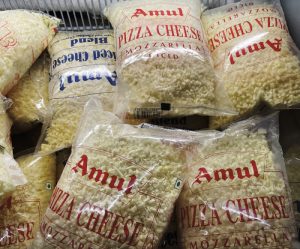
According to the International Dairy Foods Association, dairy per capita consumption across products has been increasing each year, up by 6% over the past five years and 10% over the past 15 years. Among the dairy-based and dairy-like products, the global cheese packaging market growth is perhaps the fastest growing with increasing consumption of cheese products in the home, in new convenience ready-to-eat and heat-and-eat products, and demand from the fast food industry.
The cheese packaging market is forecast by several agencies to be the fastest-growing global packaging segment from 2022 to 2029 at an estimated CAGR of 5.3%. Growth rates in South Asia and Southeast Asia are expected to be higher and possibly in the double digits – considering the overall growth of milk byproducts in the region and the introduction by global and local brands of new varieties with localization and new formats meant to work with market segmentation. The demand from the fast-food industry and for eco-friendly packaging are also factors as demand rises.
With increased disposable incomes and changes in lifestyle, the dairy and dairy product industry is now moving beyond delivering a simple homogenized or pasteurized product at the lowest price from cooperative dairies. Organized retail is building a cold chain from milk and milk product processing plants to their glass-fronted refrigerated cases that encourage self-service, in new retail formats – both in large chains and in smaller karyana shops. While shelf life is a given, shelf impact with new flavors, colors and reclosable closures is key to consumer lifestyles given to experimentation and on-the-go products.
Cheese packaging materials include foil, wraps, containers, lids, foils, boxes, and tubes with a formidable array of caps and closures. The packaging materials are generally made up of plastic, paper, aluminium, and glass. While milk and cheese packaging are heavily dominated by plastic containers, trays, and flow wraps and pouches globally at 40%, in India and South Asia the rate of plastic use is much higher. The need for oxygen and moisture barriers is high and in cheese packaging, the transfer of odors is also a consideration as well as microbial deterioration which may be mitigated by modified atmosphere packaging and oxygen scavengers.

The regulations of plastic in packaging requiring Extended User Responsibility that will impose fines for packaging according to its recycled content and recyclability are in place in India and are likely to take effect in the coming years. With the extensive use of PET bottles for flavored milk and milkshakes, one can expect the imminent advent of tethered caps and closures in the South Asian market also. Perhaps reclosable lids on plastic trays of sliced cheese products will come even sooner.
The plastic waste management regulations including the EUR rules published by the Indian government in February 2022 are extensive with a plan for gradual implementation meant to reach full or maximum compliance by 2030. This is behind the European CEFLEX rules meant to bring full compliance for recyclability by 2025. However, in several segments and formats, global packaging manufacturers in the country such as Amcor, Constantia, and EPL are ready with products that meet the AI and stricter ReCylass standards.
IndiFoodBev — authentic, impactful and influential
An English-language food and beverage processing and packaging industry B2B platform in print and web, IndiFoodBev is in its third year of publication. It is said that the Indian food and beverage industries represent approximately US$ 900 billion in revenues which implies more than 20% of the country’s GDP. Eliminating the wastage on the farmside can help to deliver more protein to a higher number of the population apart from generating sizable exports. The savings in soil, seeds, water, fertilizer, energy and ultimately food and nutrition could be the most immense contribution that country is poised to make to the moderation of climate change.
To improve your marketing and grow sales to the food and beverage processing and packaging industry, talk to us. Our research and consulting company IppStar [www.ippstar.org] can assess your potential and addressable markets in light of the competition. We can discuss marketing, communication, and sales strategies for market entry and growth.
Suppliers and service providers with a strategy and budget for targeted marketing can discuss using our hybrid print, web, video, and social media channels to create brand recognition linked to market relevance. Our technical writers are ready to meet you and your customers for content.
The second largest producer of fruit and vegetables in the world is continuously expanding processing capacities and delivery systems with appropriate innovative technologies. We cover product and consumer trends, nutrition, processing, research, equipment and packaging from farm to thali. Get our 2025 media kit and recalibrate your role in this dynamic market. Enhance your visibility and relevance to existing markets and turn potential customers into conversations. Ask for a sample copy of our bi-monthly in print or our weekly IndiFoodBev eZine each Wednesday.
For editorial info@ippgroup.in — for advertisement ads1@ippgroup.in and for subscriptions subscription@ippgroup.in
Naresh Khanna – 10 February 2025
Subscribe Now










